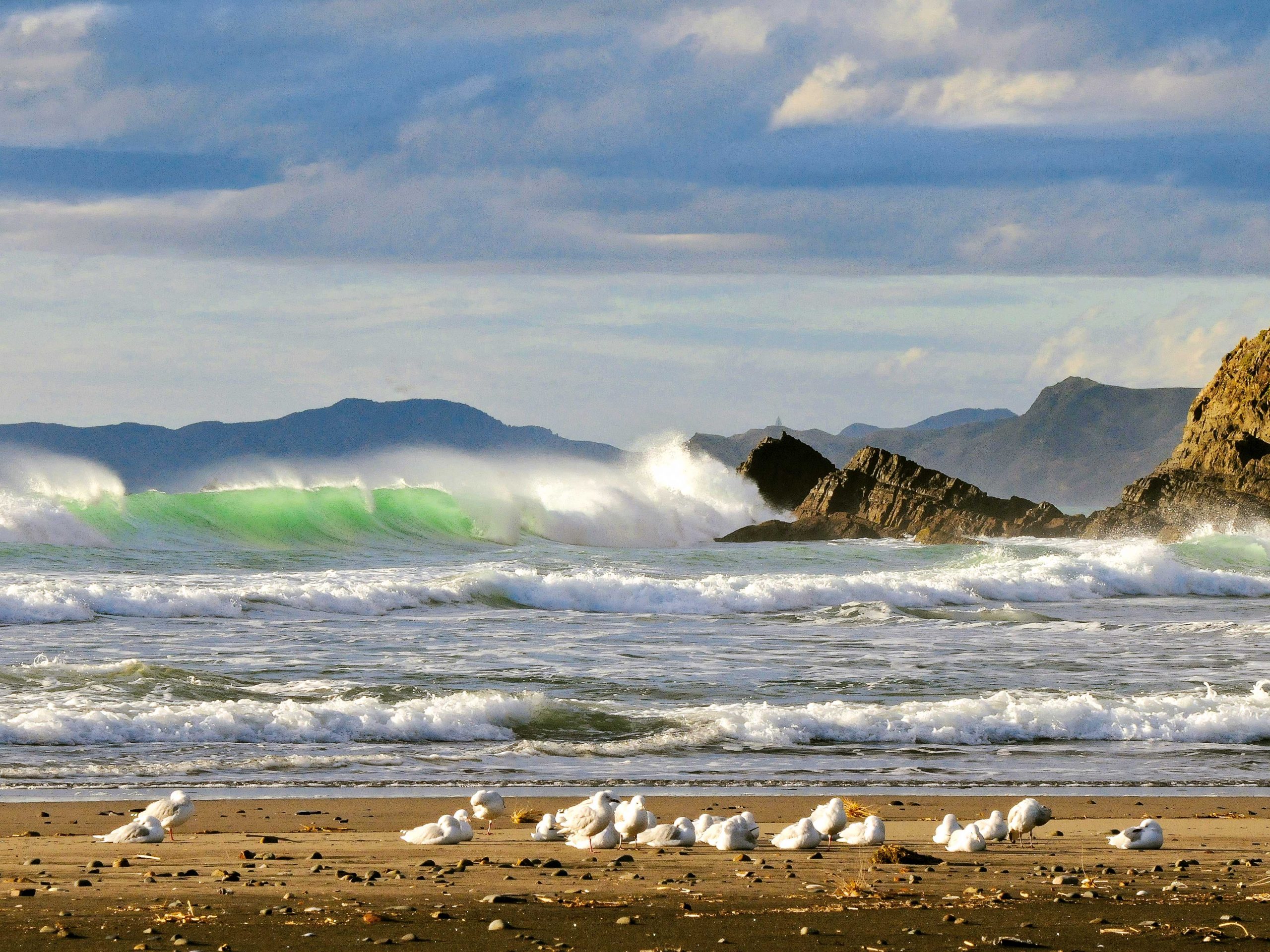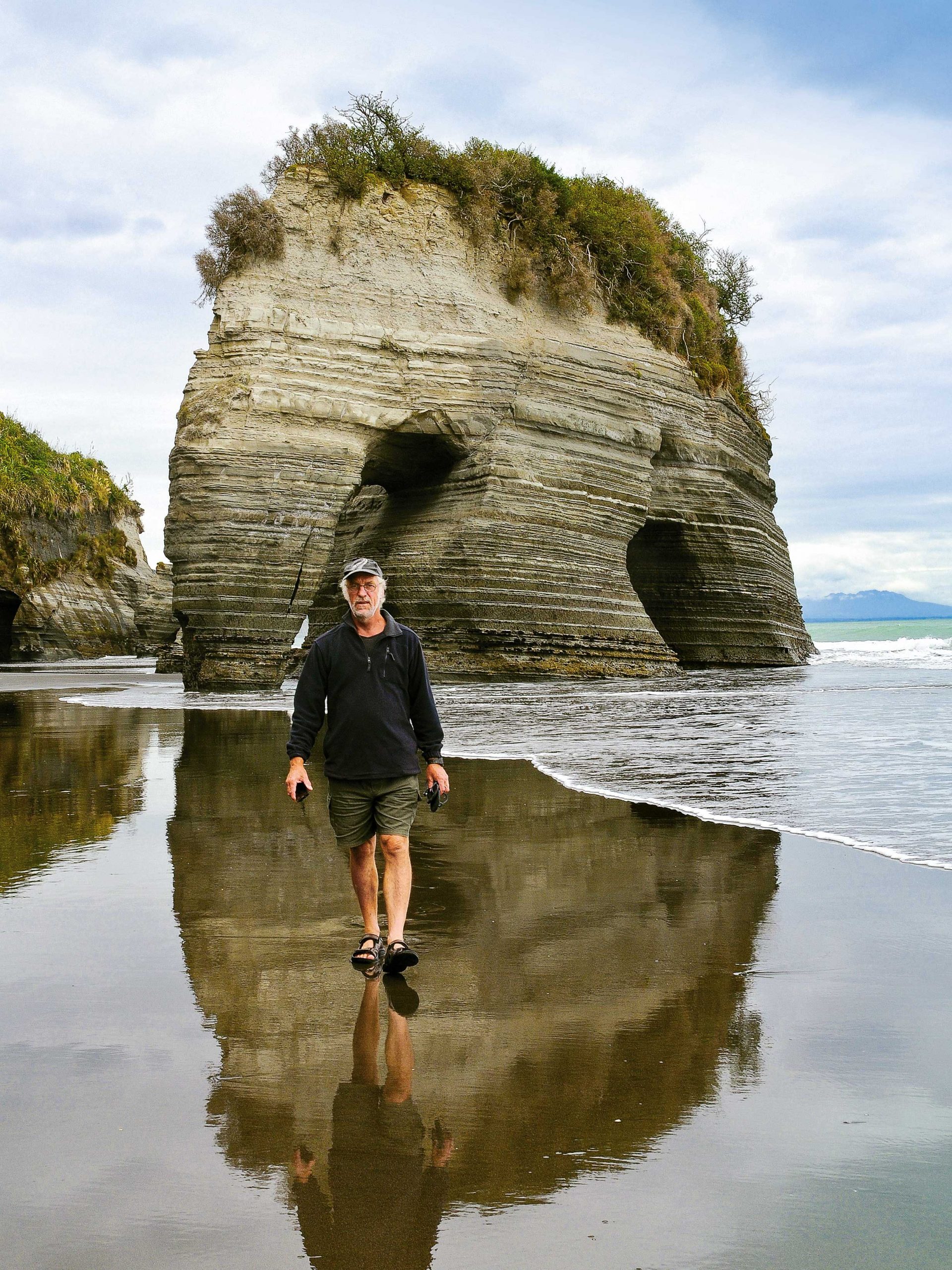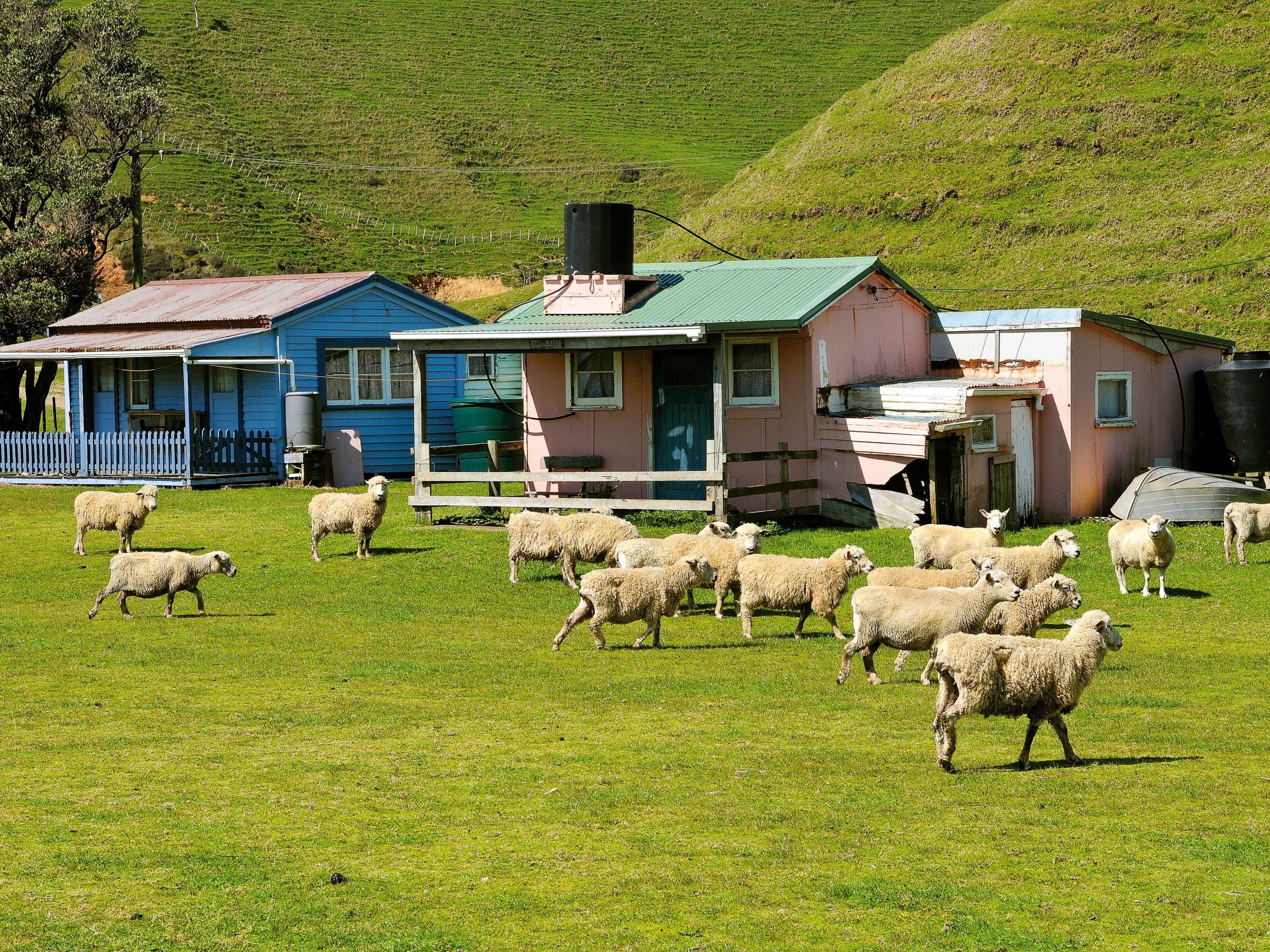Three Sisters
Finally, I’ve done it. I’ve seen the Three Sisters, though technically, there are two as one has collapsed and is now only a stump. Visiting this magnificent coastal phenomena in North Taranaki has been on my bucket list for a while but, previously, each time I passed, exploring them was foiled by high tide (one can only reach them at low tide) or teaming rain.
It’s a 10-minute walk from the car park, just south of Tongaporutu Bridge, along the river’s edge to the coast and there, on an expanse of flat sand the two remaining sisters stand tall as small low tide waves periodically wash their feet.
They are rock stacks, 25-metres-high, crowned with a fuzz of hardy vegetation. As the waves withdraw the sisters are mirrored in double. They are impressive but are outshone by the Elephant, another giant rock formation, nearby. It truly looks like its name sake.
There are more awesome rock formations, caves clad with velvety green moss, arches to walk through, and an impressive rendering of Gollum carved into a rock face. Fair enough. With all the caves, arches and weird Middle-earth landforms, it’s an appropriate place for him.
Mokau
After the glamour of the sisters, an elephant and Gollum’s landscape, the beach at Mokau is lack-lustre, although this town is arguably the whitebait hub of the world. In season there are up to 350 whitebait stands on the edges of the river with optimistic white-baiters waiting for the tiny tasty fishes to swim into their nets.
We aren’t organised enough, this time, to take the river boat up the Mokau River but reviews of the cruise are excellent.
Awakino
The Awakino River mouth, 16-kilometres-north but still on SH3, is a worth the short detour.
First we take a stroll along the river, where it turns the corner to join the sea. There is a lot of driftwood – not just small pieces but massive trees, trunks and branches, in a glorious tangle, are bleached white and worn smooth by years of water, wind, sand and sun.

A side road creeps up a cliff to a lookout high above the river’s mouth. This view is worth a cup of tea and I sensibly have hot thermoses for such splendid occasions. We watch huge waves rolling in from Tasmania. It’s mesmerising, waiting for the big one and then waiting for an even bigger one.
Marokopa
Soon after Awakino we leave SH3 and turn left onto the back road to Marokopa, which is the biggest tiny town on this stretch of coast.
The road follows a river valley through farmland featuring steep hills, lush river flats with the river curling across them and picturesque stands of kahikatea. Then the river shrinks into a stream, the valley gets steeper, and there is bush (Whareorino Forest) on both sides of the road.
The valley areas were milled 70 years ago – there are still rusting remains of steam powered traction engines – so there isn’t many ancient forest giants left standing but, regardless, it’s beautiful bush with shady hillsides completely covered in emerald ponga.
Waikawau Beach
Half way through this part of the journey we take a side road to Waikawau Beach. This remote piece of paradise has three baches, four caravans and a farm house clustered above a bend in a river.
Beach access is through a 30-metre tunnel carved into the cliff face. It’s steep country and the tunnel was built in 1911, by men using picks, shovels, wheelbarrows, muscles and sweat, so the stations to the north could use the beach as a stock route.
Kiritehere Beach
We stop for the night at Kiritehere Beach, five kilometres short of Marokopa.
I love this deserted place. The river bounces around stones and then rushes across the sand to the sea, great waves smash on headland rocks sending up giant bursts of white water and the car park and road aren’t fenced from the paddock so cattle roam around, wandering to the river to drink.
This is like coastal New Zealand used to be before it became populated and prissy.
The road turns east from here, inland to Waitomo and tour buses. This journey is the best of the west, the road not often taken, and I am reminded, yet again, to take a bow to New Zealand’s wild beauty.
Read the full article in issue #129 of Motorhomes Caravans & Destinations magazine. Subscribe here.










